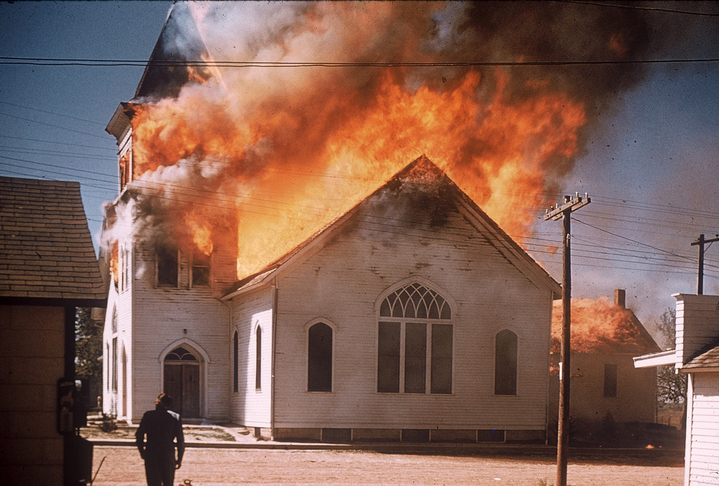
By Guy Russ
Fire is a force unlike any other. When it is under our control, fire has sparked civilizations, kindled human imagination and given life-sustaining warmth.
But as we’ve seen from the widespread devastation in Australia, wildfires ravage, destroy and kill. And the sad fact is, as we head into the warmer months in North America, we can expect more wildfire threats and losses in the future.
According to the Insurance Information Institute, increasingly hotter and drier conditions are leading to more frequent and severe fires, and a longer wildfire season in many areas. Compounding the problem, people are moving to previously unsettled areas and developed areas are becoming more densely populated.
Findings from the Insurance Information Institute also show that more than 80% of wildfires nationwide are caused by humans. In California, that number is 95%. The past few California wildfire seasons may signal a new normal for wildfire risks across a host of western states.
Every year, religious organizations are affected by wildfires — including the loss of almost two-thirds of the churches in Paradise, California from the Camp Fire in November 2018. These are the very sanctuaries people turn to in a disaster.
Many wildfire losses can be avoided by following best practices developed by wildfire experts and engaging with preventive and fire mitigation services. As a leader, the steps you take today could prevent a devastating loss to church property in the future.
Not sure where to start? You’ll find Church Mutual® offers complimentary wildfire resources online. These safety tips and best practices can help protect your church structure from natural disasters, such as wildfires — and ensure the safety of your members.
Here are three ways your organization can prepare for wildfires today.
- Prevent: Before the threat
As seen in both California and Australia, burning embers from wildfires have ignited homes and structures. They can travel great distances on a light breeze, igniting new fires wherever they land. Smoke and ash can also spread many miles and cause damage to people and properties.
The Insurance Institute for Business and Home Safety (IBHS), along with other experts, suggest these best practices to protect your property:
- Routinely review your buildings and grounds to evaluate their vulnerability to embers and flying ash.
- Remove leaves and other debris from the roof and gutters regularly to prevent embers or flames from igniting; use noncombustible covers if you have gutter guards.
- Create a five-foot clearance, or safety zone, around the building, removing combustible materials like dead plants, weeds, grass, bushes and outdoor furniture cushions. Use materials such as gravel, brick or concrete adjacent to the building.
- Monitor: During the fire season
Considering the speed and unpredictability of wildfires, a wildfire monitoring service is another prudent step to protecting yourself and your property. Monitoring services can give you valuable time to defend your structure — and escape from harm’s way. Today’s technologically advanced services make it easy to stay informed 24/7 by text or email.
- Designate leaders and staff to receive alerts of an approaching wildfire.
- Choose the most foolproof alert method for you: email, phone, text or all three.
- Know and practice your evacuation routes in case you need to escape quickly.
- Defend: When a wildfire is imminent
Local fire authorities will notify neighborhood organizations when wildfire danger is imminent and will provide evacuation instructions. You should also stay in close contact with your insurer.
While local authorities will work to control the fire, your insurer may also provide professional, private fire-fighting services as part of your policy. If your building is in the path of a wildfire, your insurer’s fire mitigation team may visit your property — and help to protect it.
They may defend your structure by applying temporary sprinklers or spray threatened facilities with fire-regardant gel. You, too, can take steps to help their efforts before evacuating:
- Shut off gas supply to your building. It’s standard emergency response practice to shut off the gas supply or propane tanks to protect structures. Close all appliance valves and gas valves inside the building and do not move propane cylinders anywhere near the building.
- Close all doors and windows to prevent embers from entering the structure and igniting combustible materials. This helps prevent the structure from burning down from the inside out.
- Turn off air conditioning to prevent outside smoke from entering the building and causing damage.
Navigating a disaster like wildfires is a daunting responsibility for leaders and staff. If you and others in your organization are isolated or concerned that you’re not up to the task, know that many faith communities are experiencing the same challenge.
Faith leaders must learn to work with first responders, police and fire authorities and decide how best to educate their staff and protect their place of worship.
Remember, wildfires can start and spread quickly, resulting in dangerous conditions and damages to your organization. Your place of worship could be in the path of the next wildfire. But with early detection and preventive measures, you can reduce your risk of wildfire-related losses and prevent catastrophic damage to lives and property.

Guy Russ is an assistant vice president of Risk Control at Church Mutual Insurance Company.


